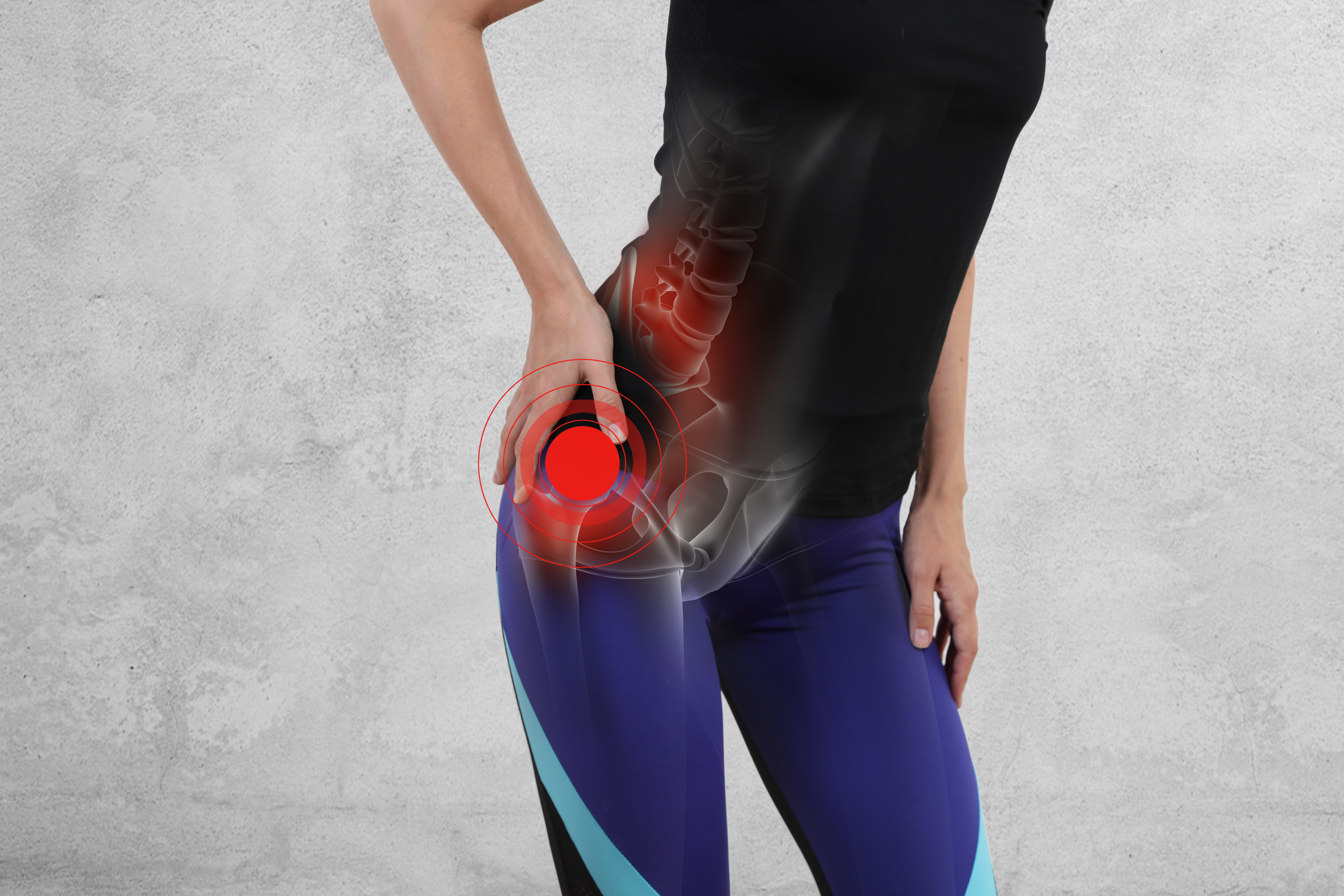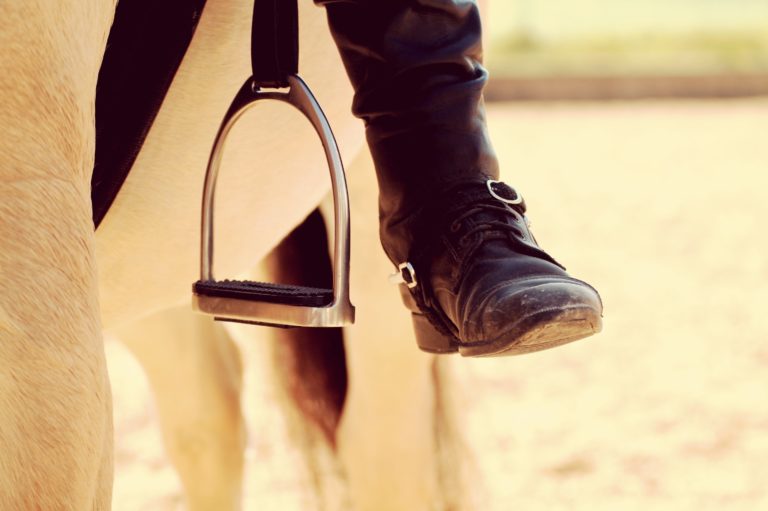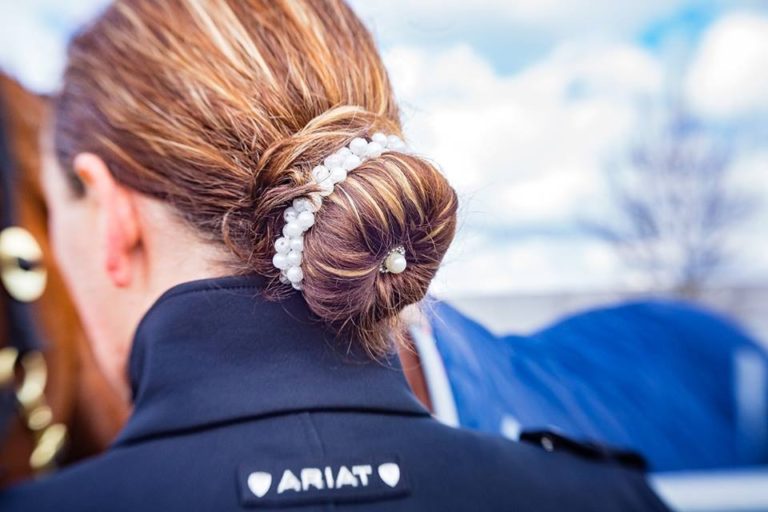Q: I’ve been having problems with my right hip locking, which is somewhat painful. I usually notice it after mounting at the walk. Most of the time my hip releases after a couple of minutes with a funny popping or snapping sound. Is this something that’s common in dressage riders? Are there any exercises I can do to prevent this from happening? —Kate Davidson of Charlottesville, Virginia
A: In order for the hip to move smoothly, a balance must exist between the muscles responsible for the movement. In equestrian sport, it is common that the hip flexors, adductors and either internal or external rotators are strong and active, and the extensors, abductors and the opposite rotators are weak and overstretched. (This is an oversimplification because with many riders, the muscle imbalances become complicated when the pelvis and lumbar spine are asymmetrical, but this would need to be evaluated on an individual basis.)

Picture a ball rolling in a bowl when the bowl is moved in a consistently circular fashion. The ball stays at the same level in the bowl and rolls smoothly and effortlessly. However, if you change the rate of speed of the circular movements of the bowl, or if you make the movements inconsistent, the ball will fall or bounce and will not stay centered in relation to the bowl. There will sometimes be too much pressure and other times too little pressure of the ball against the bowl for the movement to remain smooth.
The round ball (which is the head of the femur) must always stay centered in the bowl (which is the acetabulum of the pelvis). When the muscles that move the femur or the pelvis are not balanced, they create forces that prevent optimal movement and position. People in general lose this centric positioning due to the amount of sitting we do over time and the impact of gravity, bending us forward. That’s why the butt is the first to go as we age. The hip flexors get tight and the hip extensors get weak. Riders have an even bigger challenge because they sit the majority of the time they are on the horse and they never fully extend the hip. The hip flexors and adductors get tight due to the constant rebalancing in the saddle if not the plain old incorrect use of these muscles to substitute for a weak or inactive core.
The result is muscle imbalance and improper positioning of the two bones that make up the hip joint. Usually, the femoral head is pulled forward and pressed too far into the front of the acetabulum. Other times, the femoral head is held too far back in the acetabulum, but again this should be evaluated individually. When these positional faults occur, and the rider swings a leg up (flexion with abduction and external rotation of the femur) in mounting, the head of the femur can become jammed and might account for the snapping sound you notice when it unlocks due to pressure being relieved when the movement of the horse frees up the muscles/joint. The other scenario that can occur is if the illio-tibial band, which runs down the outside of the femur, slides forward or backward over the lesser trochanter of the femur (bump of bone on the side of the hip). This could also occur in mounting and would give you a feeling of locking more on the outside of the hip. Again this is a result of muscle imbalance within the lumbar spine, hip, knee and ankle.
Exercises are definitely indicated. But, as is always the case, should be done once the hip is fully evaluated by a doctor. When pain and dysfunction are limiting movement, it is wise to have a physician evaluate the joint and perhaps x-ray it. Some people have hip-position faults from birth, may have arthritic changes that preclude certain exercises or in rare instances, other joint abnormalities that need to be addressed.
With this said, a follow-up visit with a physical therapist to evaluate the motion and stability of your lumbar spine, hip knee and ankle, should result in a specific exercise program to activate and strengthen the muscles of your core, restore muscle balance around your hip and suppleness of your hip flexors and adductors. Some exercises that may help are bridging, quadriceps and hip-flexor stretches, hamstring stretches and adductors stretches. Single and double knee-to-chest stretches can help limber the lumbar spine. Modified squats and lunges are great if there is no knee pain, but it is absolutely imperative to stabilize the spine with the core muscles when doing any of these exercises.
In addition, perform everyday activities mindfully to restore muscle balance in a functional way. Standing fully upright, walking with emphasis on heel-to-toe progression (no flip-flops) and getting up and down from chairs with conscious effort to push through the heels and fully extend the hip will go a long way toward centering the bones of your hip and making your riding more effective.
If you have difficulty with exercises or your problem persists, it may be necessary to mobilize the hip manually and then to reset the muscle balance neurologically or to perform myofascial-release techniques to prepare the joint for exercise. A qualified physical therapist can help you with these manual therapies in order to make sure you get the best results for your time and effort.

Stacey Brown, PT, CERT, received her physical therapy degree from Pacific University in Oregon. She specializes in the treatment of equestrian athletes, and is certified in equine rehabilitation, with a background in neurologic and orthopedic treatment. She is based in Florida (animalrehabinstitute.com).











